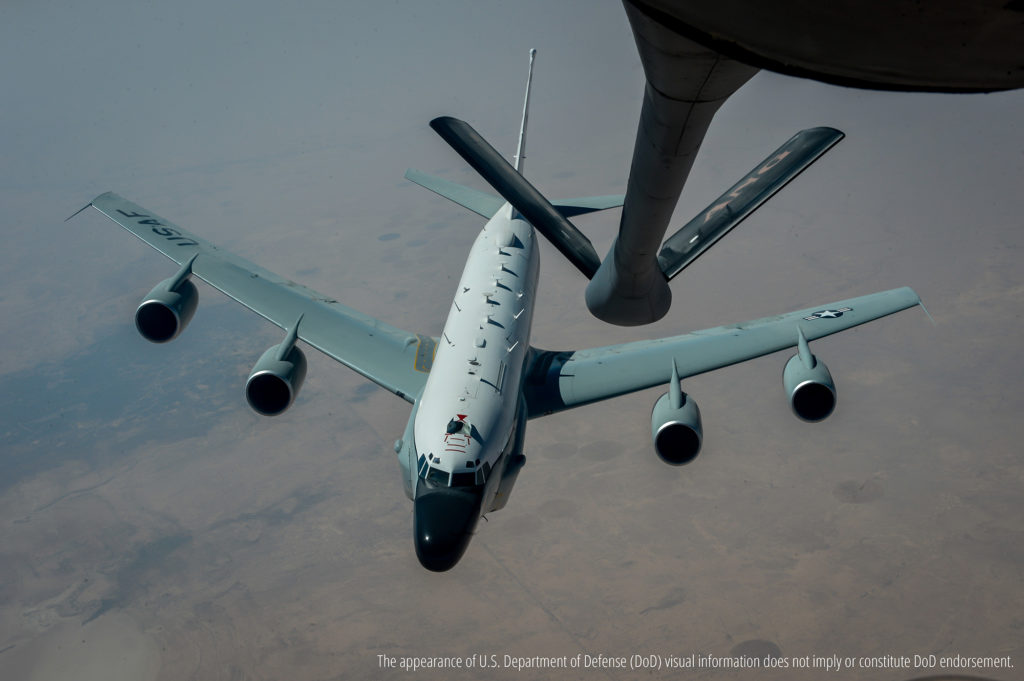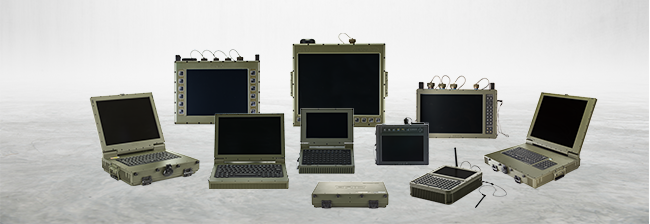GRiD Defence Systems is one of only a handful of electronic equipment suppliers that has received the TEMPEST accreditation for a number of its rugged computer products. To successfully meet this classified qualification standard requires a deep understanding of electronic noise and how to reduce it to the bare minimum. We find out more in this blog.
Electronic Warfare (EW) has played a significant role in military operations since World War II, and today manifests itself in many guises, operating both actively (transmitting) and passively (listening), and in combinations of both.
Electronic intelligence gathering – known as ELINT – has also grown hand-in-hand with the development of increasingly sophisticated communications systems and radars, with the development of advanced electronic snooping platforms, one notable example being the RC-135 Rivet Joint communications and signals intelligence-gathering aircraft operated by the U.S. Air Force and Royal Air Force.

A RC-135V/W Rivet Joint departs after receiving fuel from a KC-135 Stratotanker assigned to the 340th Expeditionary Air Refueling Squadron during a mission in support of Operation Inherent Resolve Aug. 14, 2017. The RC-135V/W reconnaissance aircraft supports theater and national level consumers with near real time on-scene intelligence collection, analysis and dissemination capabilities. (U.S. Air Force photo by Staff Sgt. Michael Battles)
Such systems for the most part target intentionally transmitted RF signals, such as radio communications and radar, but there is also an intelligence discipline that aims to detect and exploit electronic signals that constantly radiate through the normal operation of equipment. This is known as measurement and signature intelligence (MASINT).
The secret world of MASINT
While much of the discipline remains secret or classified, an early publicised example of MASINT was the use of the “Black Crow” sensor – fitted to US AC-130 gunships – to detect and locate the ignition systems of North Vietnamese trucks moving on the “Ho Chi Minh Trail” during the Vietnam War.
When oscillating signals are passed through a cable or interface, radio frequency signals are created and these can be detected and recorded with the right equipment.
The art of intercepting unintentional signals advanced rapidly in the later stages of World War II to a point where systems could detect and re-create encrypted teleprinter messages in plain text, and as computers became more prevalent in the post-war world it became possible to re-create the imagery being displayed on computer monitors by reading the signals being transmitted through the video cabling.
The signals created by using a keyboard or printer, could also be read. The ability to intercept this “Van Eck radiation” had enormous value to the intelligence-gathering community, and continues to do so today.
In the 1960s the U.S. National Security Agency formalised standards to ensure that equipment could be qualified to varying levels of resistance to interception, creating the TEMPEST qualification standards, subsequently adopted by NATO and known today as SDIP-27.
What is TEMPEST qualification?
TEMPEST standards are not specifically about electronic noise, but are primarily concerned with the readability of the unintentional signals created by any electronic system, and consequently the ability to recover useful data and conduct electronic espionage.
As with electromagnetic compatibility (EMC) testing there are varying levels of TEMPEST electronics qualification, based on the distance between the test item and the listening equipment. Level C is the least strict, being based on 100 metres of free-air attenuation, or its equivalent through building materials. Level B reduces the distance to 20 metres, while Level A is the most stringent with a distance between systems of just one metre.
In the military world Levels B and C are the most applicable as the separation distances are more in line with operations within secure bases. However, Level A is more applicable in the “James Bond” world of human intelligence gathering.
Unlike EMC testing, in which the desired electronic noise levels are published, the detailed limits of TEMPEST requirements are classified.
This, in turn, means that equipment suppliers enter into the testing with no idea of the exact parameters they are expected to meet. Moreover, there is no feedback from the tests other than a simple “pass” or “fail”.
While there are numerous accredited testers for EMC, there are far fewer available for TEMPEST testing owing to its secret nature, and the process comes at a high cost. In the UK, where TEMPEST accreditation is overseen by the National Cyber Security Centre, there are only two testing agencies, including QinetiQ.
Meeting TEMPEST requirements
Without knowing the specified limits of the readability of emissions, the design of a TEMPEST-compliant device can be tricky, but the best starting point is to create a system with low noise and a correspondingly low trace in EMC testing. Although they are distinct properties, readability and noise are closely related, so if you’re good at EMC you’re likely to be good at the other aspects.
GRiD has a deep understanding of electronic noise and how to minimise it through the use of clever electronic design and appropriate shielding, backed up by its ability as the OEM to control all elements of the design and manufacturing process.
Our computers are among the quietest from an unintentional emission viewpoint. While this makes them eminently compatible with other systems in a military or government agency setting, it also makes them highly likely to meet TEMPEST standards.
As proof of that, the company’s GRiDCASE 1513 ruggedised 13.3” laptop, GRiDCASE 1590 ruggedised 15-inch laptop and larger GRiDCASE 1595 19-inch laptop have been accredited to Tempest SDIP-27 Level B.
Two further products are undergoing TEMPEST testing this month, in the form of the GRiDCASE 1513 13-inch laptop and the GRiDCASE 2500 10-inch tablet.
The ability to operate in a TEMPEST environment is a customer requirement that is increasingly encountered, and GRiD is one of very few companies that already holds SDIP-27 certification for products in its portfolio. By achieving this we have demonstrated our ability to meet these exacting standards, and to extend that ability to all products in our range.

Do you need to meet TEMPEST standards? Contact us if you require further assistance and our expert team can advise on +44 (0)1628 810 230 or drop an email to sales@griduk.com

